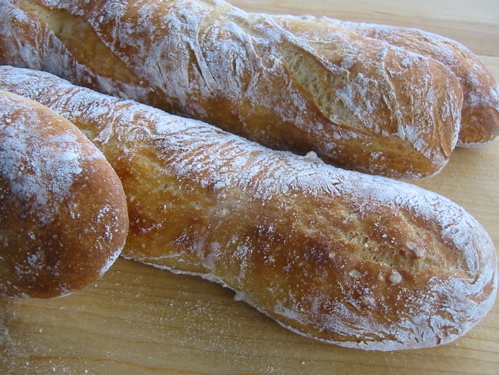How to fool yeast.

(It can’t be all that hard can it? I mean, they’re unicellular organisms.)
One example of the way commercial yeast can be manipulated to brilliant effect is Peter Reinhart’s pain à l’ancienne. This is one of my go-to breads since it performs so well in a standard oven and is so darn easy to make (it requires only one rising).
The principle is as simple as it is ingenious. A dough is prepared using ice water (to keep the yeast dormant), then immediately put into the refrigerator for an overnight rest. What’s the upshot of this? Those who haven’t fallen utterly asleep during the last ten days of fermentation talk (and I know there are precious few of you left out there), will remember that a little water is all it takes to activate the enzymes present in flour. As soon as it hits they go right to work chopping the flour’s amylose molecules down into simple sugars. And being immune to a refrigerator’s 40-degree temperature, they go right on working…all night.
The result is a dough with an unusually high proportion of sugar in it. Since the yeasts have been asleep all night, they haven’t been able to consume any. That changes when they dough is taken out of the fridge and starts to warm, at which point the pig-out gets underway. Three hours later the dough still has a very high proportion of sugar left in it, though it’s risen enough to shape and bake. And is it ever good. The extra sugars translate into a very light nutty-tasting crumb, to say nothing of the nice golden brown crust thanks to the extra caramelization.
All in all a terrific (and terrifically easy) bread to make, and another reminder of the many advantages that come with having both a brain and a spinal cord.